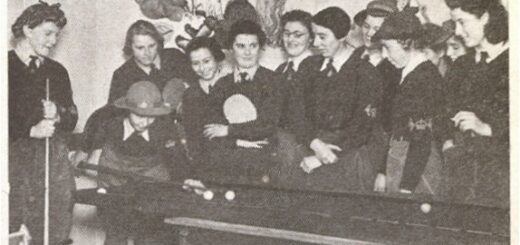Running the WLA: From WLA number to Land Girl
‘At headquarters she was a number’, at the local level… ‘she becomes an individual’. ‘She is no longer W.L.A. No. 657085, she is Betty or Madge’.
Vita Sackville-West, ‘Women’s Land Army’, p.15.
The transformation of a Land Girl from number to name would not have been possible without the significant administrative apparatus of the Women’s Land Army. The January post looked at the Women’s Land Army headquarters at Balcombe. This post looks at how the national HQ connected with the Land Girl placed in counties around Britain. We look here at the different organisational roles within the WLA and what each of them entailed.
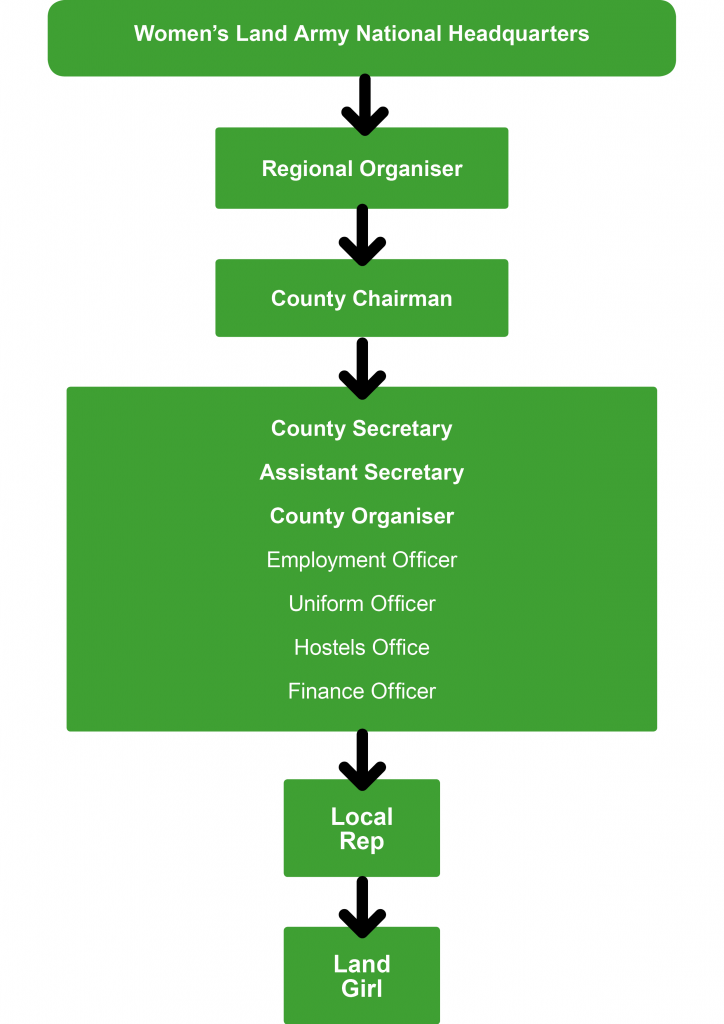
Regional Level
Regional Organiser: The Regional Organisers were paid administrators who linked the Headquarters with the County Offices. There were 7 regional officers, who held responsibility for several counties. They’d aim to visit a county for two days and then report back to Balcombe. They ensured that WLA policy was carried out, on issues from uniform and pay, to hostel accommodation and billet conditions.
County Level
We now move down to the county level, where there was a WLA County Headquarters office. This office had a paid County Secretary, with assistants, and a county committee of unpaid advisers. For administrative purposes, larger counties were split into two, as was the case with Kent, Sussex, and Suffolk, where there were two offices.
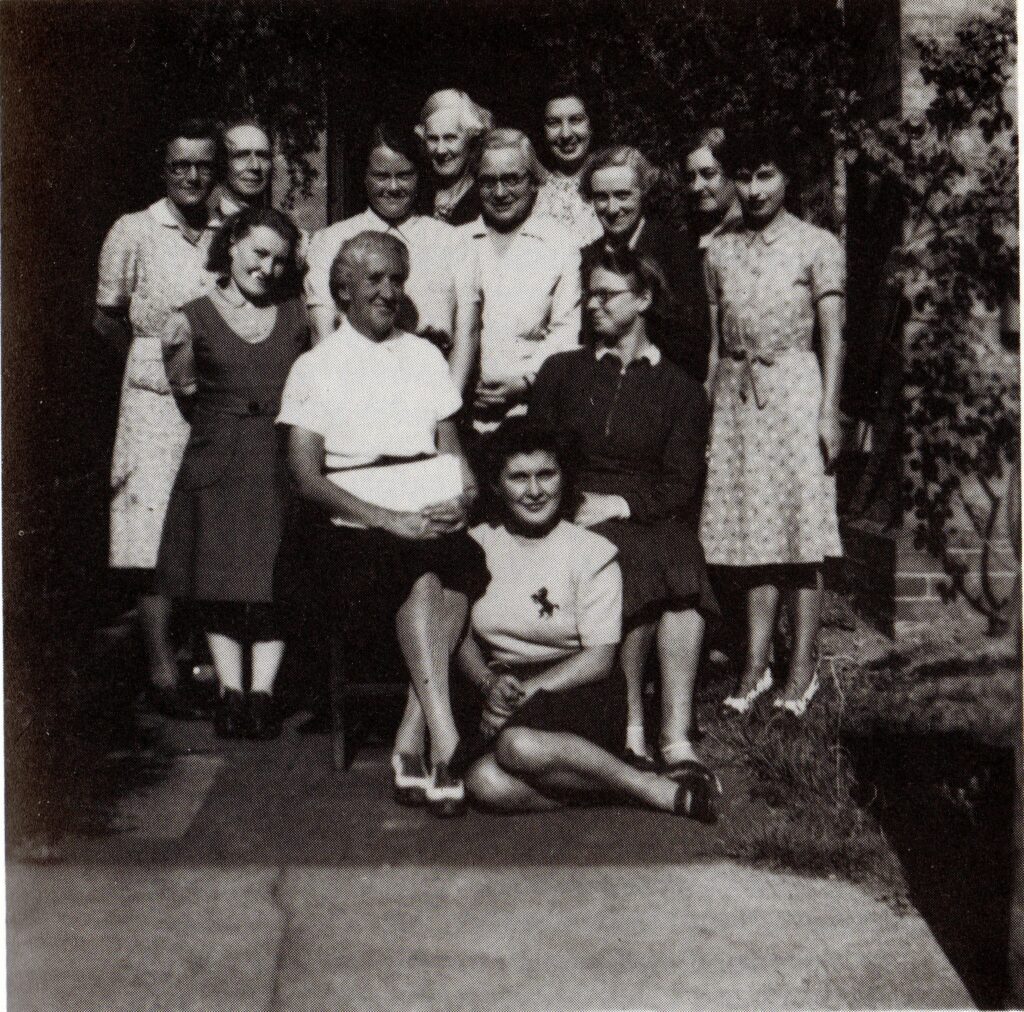
County Chairman
The county committee had a Chairman and eight members, always women. The female Chairman was selected by Lady Denman, from the networks and connections she had developed from her time as Chairman of the National Federation of Women’s Institutes. Lady Denman picked these individuals based on their status within the local area. Lady Denman needed these women to command respect from their fellow country male peers, at a time when some landowners and farmers were opposed to the idea of women working on the land. This was an unpaid position.
All the following roles were salaried.
County Secretary
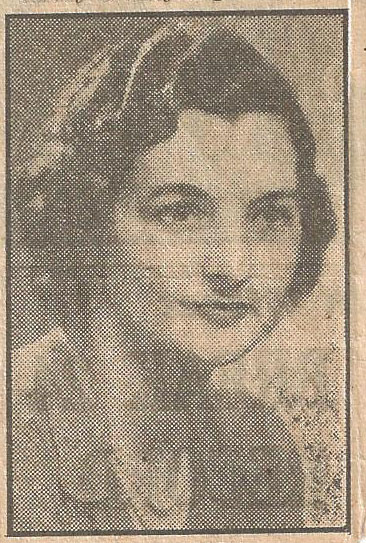
County Secretary (Yorkshire),
County Secretary (Lincolnshire), and County Organiser (Derbyshire / Nottinghamshire).
As Norfolk County Secretary, Iris Tillett (see above photo) said that in this paid role, she ‘had to be prepared to tackle any of the jobs of the organisers, as well as handling all office work’. Women who worked as county secretaries:
- would be involved with local recruitment and training of Land Girls
- arrange for them to be imported from other counties
- place them on farms or with War Agricultural Executive Committee mobile gangs.
They also ensured ‘that all conditions of employment, such as wages, overtime-pay and sick-pay, holidays and days off, are properly adhered to’.
The County Secretary would write to the WLA Headquarters with all the latest news from the county, so they could include it in Regional News section of The Land Girl journal. This role was not just office based; the County Secretary would also visit hostels and sit on several county committees.
Marjorie Haigh, who was County Secretary for Derbyshire and Nottinghamshire from 1947 onwards.
According to a newspaper article,
‘she was responsible for 15 Land Army administrative officers and arranged for the staffing and cooking of 30 hostels’.
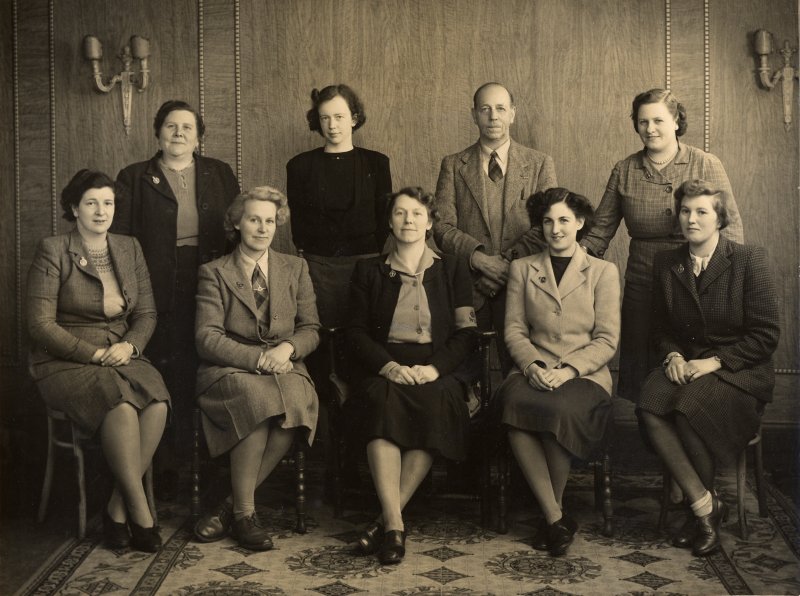
Source: Stuart Antrobus ‘We Wouldn’t Have Missed It For The World’, p. 9.
County Organiser
This was a paid role, assisting the County Secretary. These were the ‘field workers of the county office’. They dealt with a whole host of issues, including:
- employers paying Land Girls the wrong wages
- disagreements between Land Girls and landlords
- the conditions of accommodation, farms, training
They also met some new Land Girls and helped them settle into a billet. County Organisers maintained relationships with the more local representatives (see below).
Before becoming County Secretary, Marjorie Haigh worked the role of a County Organiser. She drove around 1000 miles a month, which saw her visit 2 hostels and 5 farms in just one day! When she left her role as County Organiser, she was given an engraved tray.
Local representative
This was an unpaid, part-time volunteer role. Over 3,000 women worked as ‘local reps’, visiting Land Girls on a regular basis, attempting to establish a personal relationship with Land Girls. Vita Sackville-West was the local rep for Kent, so could speak first hand of the role. Local reps were the welfare link between the Land Girl and the organisation. When a Land Girl moved to an area, the rep would tell them:
- about local groups, such as the Young Farmers’ Club
- the Women’s Institute
- the local church,
- other activities taking place in the area.
They were the ‘eyes and ears of the County Office’. After a visit, they would fill in a form and send this back to the County Office. However, there was often a social class clash between Local Reps and Land Girls. As Sackville-West wrote in 1944:
‘It is perhaps a little unfair to set every well-meaning Rep down as “Lady Blimp,” but let us at least recognise that some divergence of point of view must inevitably arise between the staid squirearchy of middle-age, and gay wild youth out for all the fun it can get’.
Vita Sackville-West, ‘Women’s Land Army’, p. 17.
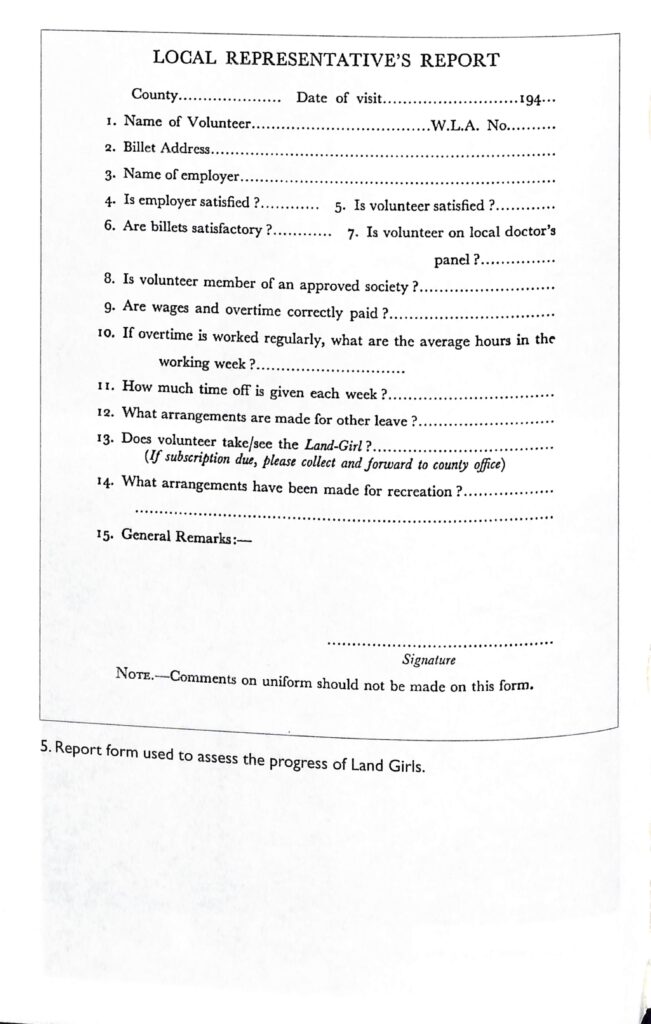
Source: The Women’s Land Army Handbook
Find out more
A list of all the Chairmen and County Secretaries, published in The WLA Handbook.
Antrobus, Stuart. ‘We Wouldn’t Have Missed It For The World’: The Women’s Land Army in Bedfordshire, 1939-1950. Copt Hewick: Book Castle, 2008, pp. 5, 8-10
Kramer, Ann. Land Girls and Their Impact. Barnsley: Remember When, 2008, p. 107.
Sackville-West, Vita. The Women’s Land Army. London: M. Joseph, 1944, pp. 14-15, 17, 21.
Shewell-Cooper, W. E. Land Girl: A Manual for Volunteers in the Women’s Land Army. Stroud: Amberley, 2011.
Tillett, Iris. Cinderella Army: Women’s Land Army in Norfolk, 1988, pp. 5, 21.


